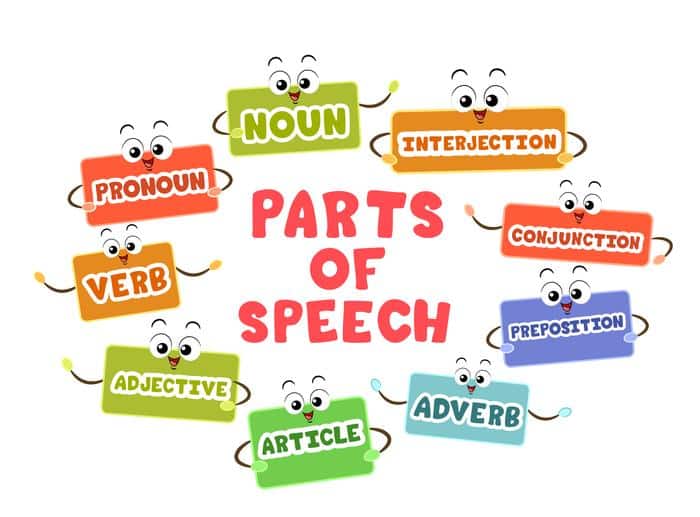Parts of Speech

The “Parts of Speech” category is fundamental to understanding and constructing sentences in any language. It encompasses the various types of words, each serving a unique role in the sentence. This category is crucial for grasping how words are organized and how they function together to form coherent and meaningful sentences. Among these parts of speech, adjectives play a particularly significant role.
Adjectives are words that describe or modify nouns and pronouns, providing additional detail and specificity. They are key in painting a vivid picture in the reader’s or listener’s mind, enriching the narrative by offering information about size, shape, color, texture, feeling, sound, and more. For example, in the phrase “the bright sun,” “bright” is an adjective that gives more information about the sun. Adjectives can also indicate quantity, as in “several cookies,” or quality, like “beautiful scenery.”
In addition to adjectives, the Parts of Speech category covers nouns, verbs, adverbs, pronouns, prepositions, conjunctions, and interjections. Each part of speech has its own set of rules and functions, which are essential for constructing grammatically correct and expressive sentences. Understanding how these different parts of speech work together is vital for language learners at all levels, from beginners to advanced speakers and writers.
Moreover, this category is particularly useful for those looking to improve their writing and speaking skills. A strong grasp of parts of speech, especially adjectives, enables one to create more nuanced and descriptive sentences, enhancing both written and oral communication. Whether for creative writing, academic purposes, or everyday conversation, mastery of parts of speech is an invaluable aspect of language proficiency. Through detailed explanations, examples, and exercises, the “Parts of Speech” category offers a comprehensive guide to understanding and using these essential building blocks of language effectively.
Frequently Asked Questions
What are the parts of speech?
The parts of speech are categories of words based on their function within a sentence. There are eight primary parts of speech in English: nouns, pronouns, verbs, adjectives, adverbs, prepositions, conjunctions, and interjections.
Nouns name people, places, things, or ideas; pronouns stand in for nouns; verbs express actions or states of being; adjectives describe nouns; adverbs modify verbs, adjectives, or other adverbs; prepositions show relationships between different parts of a sentence; conjunctions connect words, phrases, or clauses; and interjections are exclamations that express emotion.
Understanding each part of speech is crucial for mastering sentence structure and grammar in English.
What is an adjective?
An adjective is a part of speech that describes or modifies a noun or a pronoun, adding detail to help visualize or understand it better. Adjectives provide information about the size, shape, age, color, origin, or material of a noun or pronoun, as well as many other aspects such as opinions or quantities.
For example, in the phrase “a loud noise,” “loud” is an adjective that describes the noun “noise.” Adjectives are essential for creating descriptive, detailed sentences and can be found before the noun they describe or after a linking verb.
What is an adverb?
An adverb is a part of speech that modifies verbs, adjectives, or other adverbs, providing additional information about how, when, where, why, or to what extent something happens. Adverbs can describe the manner, time, frequency, degree, and place of the action or condition.
For instance, in the sentence “She sings beautifully,” “beautifully” is an adverb that modifies the verb “sings,” indicating the manner of singing. Adverbs often end in “-ly” but not always, as words like “very,” “quite,” and “well” are also adverbs.
What is a preposition?
A preposition is a part of speech that shows the relationship between a noun or pronoun and other elements in a sentence, typically indicating direction, time, place, location, or spatial relationships. It helps in constructing phrases that give more information about when, where, and how something occurs.
Common prepositions include “in,” “on,” “at,” “by,” “for,” “with,” and “about.” For example, in the sentence “The book is on the table,” “on” is a preposition that shows the relationship between “book” and “table.” Prepositions are crucial for providing context in sentences.


























